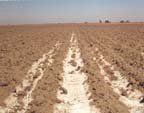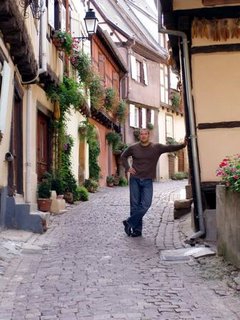
We are tasting a flight of Sauvignon Blanc wines at work tomorrow, in an effort to solidify some sense of where our wines can and do fit into the marketplace. I can't wait, as I really feel that I need some more specific guidance from Marketing and the owners as to where the wine should be going, stylistically. I should have a lot more info to guide some critical blending decisions that need to be made early next week.
I have been busy procuring some examples of wine types from around the globe, and the selected wines have begun to arrive this week. In one of the shipments, from The Wine Cask, in Santa Barbara, I ordered an extra bottle of an inexpensive wine from the Loire appellation of Cheverny. I do not know much about this AOC, but turned up some info on the web. Apparently Cheverny AOC allows reds from Cab Franc and Pinot Noir, and whites from Sauvignon and Chardonnay. I think I remember seeing a note to the effect of 60-85% Sauvignon being typical in the appellation whites. (If someone has more solid knowledge, please share!)
SO, I have a bottle here at home this evening of the 2004 Domaine du Salvard Cheverny (blanc,) imported by Kermit Lynch, and retailed at $13.
Definitely a familiar Loire aromatic in the nose; a tiny touch sulfurous, but yielding to a kind of struck flint, crushed granite minerality. Fans of solid acidity will appreciate this wine, and yet it has a very new-world richness on the palate. I would guess that we are in the 13%+ alcohol range here, almost a new-worldish opulance, but tempered by the minerality and structure of the wine. Lime zest is the nearest we come to overt fruit in this wine, perhaps along with slightly underripe apricot. I think that this is definitely worth the price of admission, maybe more bang for the buck than a lot of California Sauvignons...
This is going to be LOVELY with dinner tonight; I am making a homemade pizza on crisp handmade crust, with sliced yellow squash, fresh chevre, cracked peppercorns, fennel seeds, and a drizzle of a fruity, slightly bitter olive oil. Some salad on the side, (using up the last of the store-purchased salad, as I am starting some arugala this weekend, per my last post.)
There is a bit of chill in the air this evening, but I just got the fireplace started, and it will soon be glowing with a gentle heat. A good night to read, I guess!


